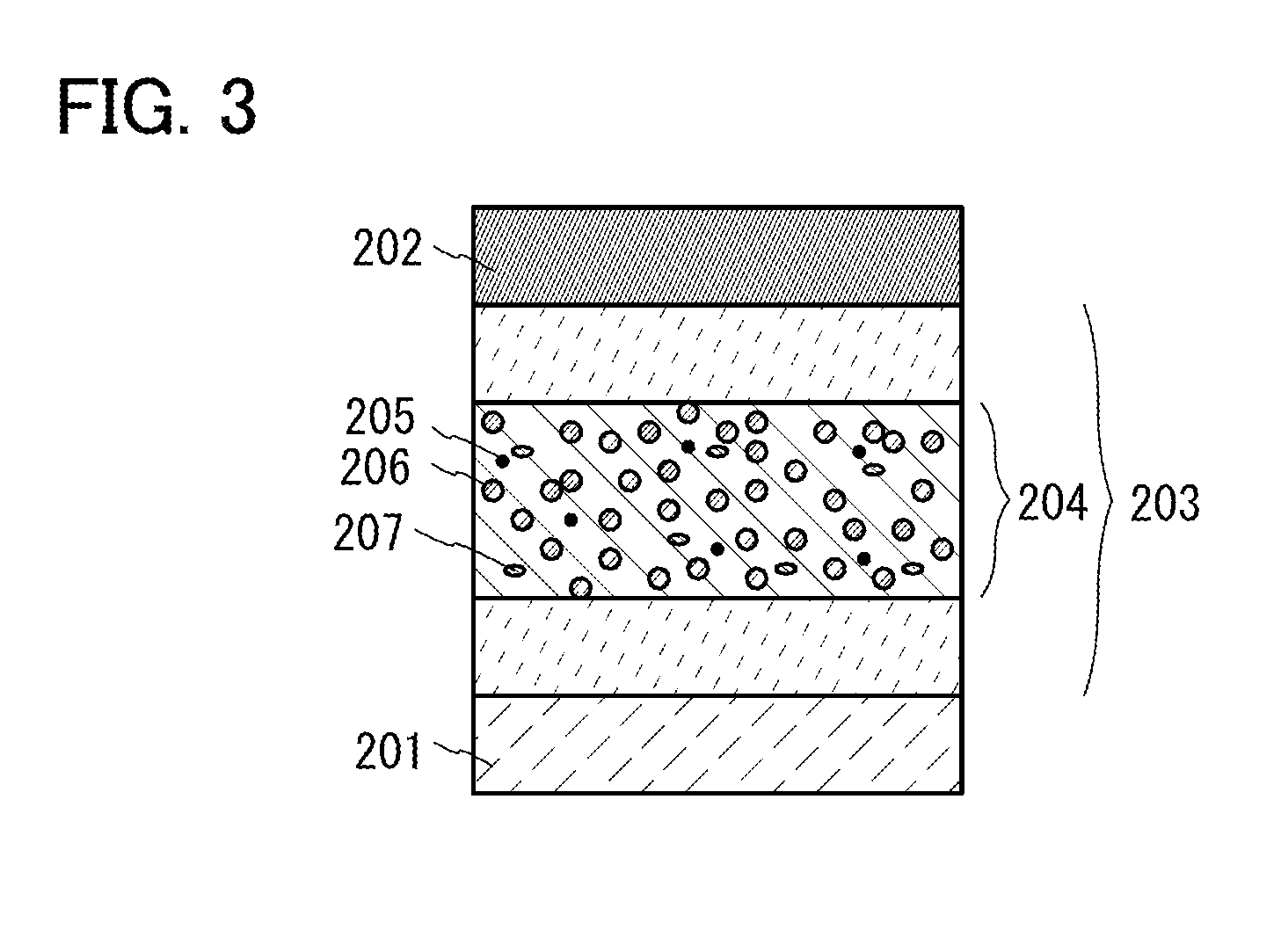Heterocyclic compound, light-emitting element, light-emitting device, electronic device, and lighting device
a technology of light-emitting devices and compounds, applied in the field of heterocyclic compounds, can solve problems such as difficult to obtain features, and achieve the effect of reducing power consumption and high current efficiency
- Summary
- Abstract
- Description
- Claims
- Application Information
AI Technical Summary
Benefits of technology
Problems solved by technology
Method used
Image
Examples
embodiment 1
[0075]Embodiment 1 will show a heterocyclic compound according to one embodiment of the present invention.
[0076]One embodiment of the present invention is a heterocyclic compound represented by the general formula (G0).
E-Ar-A (G0)
[0077]In the general formula (G0), A represents any of a substituted or unsubstituted carbazolyl group, a substituted or unsubstituted dibenzothiophenyl group, and a substituted or unsubstituted dibenzofuranyl group; E represents a substituted or unsubstituted dibenzo[f,h]quinoline ring; and Ar represents an arylene group having 6 to 13 carbon atoms. The arylene group may have one or more substituents that may be bonded to form a ring. Note that the number of carbon atoms of an aryl group and an arylene group given in this specification refers to the number of carbon atoms which form a ring in the main skeleton and does not include the number of carbon atoms in a substituent which is bonded to the main skeleton.
[0078]Another embodiment of the present inve...
embodiment 2
[0133]In this embodiment, a light-emitting element in which the compound according to one embodiment of the present invention is used for a light-emitting layer will be described with reference to FIGS. 1A and 1B.
[0134]One embodiment of the present invention is a compound in which a dibenzo[f,h]quinoline ring and a hole-transport skeleton are bonded through an arylene group.
[0135]The above-described compound has a hole-transport skeleton in addition to a dibenzo[f,h]quinoline ring, making it easy to accept holes. Moreover, since a dibenzo[f,h]quinoline ring and a hole-transport skeleton are bonded through an arylene group, decreases in band gap and triplet excitation energy of this compound can be smaller than those of a compound in which a dibenzo[f,h]quinoline ring and a hole-transport skeleton are directly bonded. By using the compound, in which a dibenzo[f,h]quinoline ring and a hole-transport skeleton are bonded through an arylene group, for a light-emitting element, the elemen...
embodiment 3
[0185]In this embodiment, a mode of a light-emitting element having a structure in which a plurality of light-emitting units is stacked (hereinafter, referred to as tandem element or stacked-type element) will be described with reference to FIGS. 2A and 2B. This light-emitting element is a light-emitting element including a plurality of light-emitting units between a first electrode and a second electrode.
[0186]In FIG. 2A, a first light-emitting unit 311 and a second light-emitting unit 312 are stacked between a first electrode 301 and a second electrode 303. In this embodiment, the first electrode 301 functions as an anode and the second electrode 303 functions as a cathode. The first electrode 301 and the second electrode 303 can be the same as those in Embodiment 2. Further, the first light-emitting unit 311 and the second light-emitting unit 312 may have the same or different structures. The first light-emitting unit 311 and the second light-emitting unit 312 may have the same s...
PUM
| Property | Measurement | Unit |
|---|---|---|
| internal quantum efficiency | aaaaa | aaaaa |
| internal quantum efficiency | aaaaa | aaaaa |
| work function | aaaaa | aaaaa |
Abstract
Description
Claims
Application Information
 Login to View More
Login to View More - R&D
- Intellectual Property
- Life Sciences
- Materials
- Tech Scout
- Unparalleled Data Quality
- Higher Quality Content
- 60% Fewer Hallucinations
Browse by: Latest US Patents, China's latest patents, Technical Efficacy Thesaurus, Application Domain, Technology Topic, Popular Technical Reports.
© 2025 PatSnap. All rights reserved.Legal|Privacy policy|Modern Slavery Act Transparency Statement|Sitemap|About US| Contact US: help@patsnap.com



